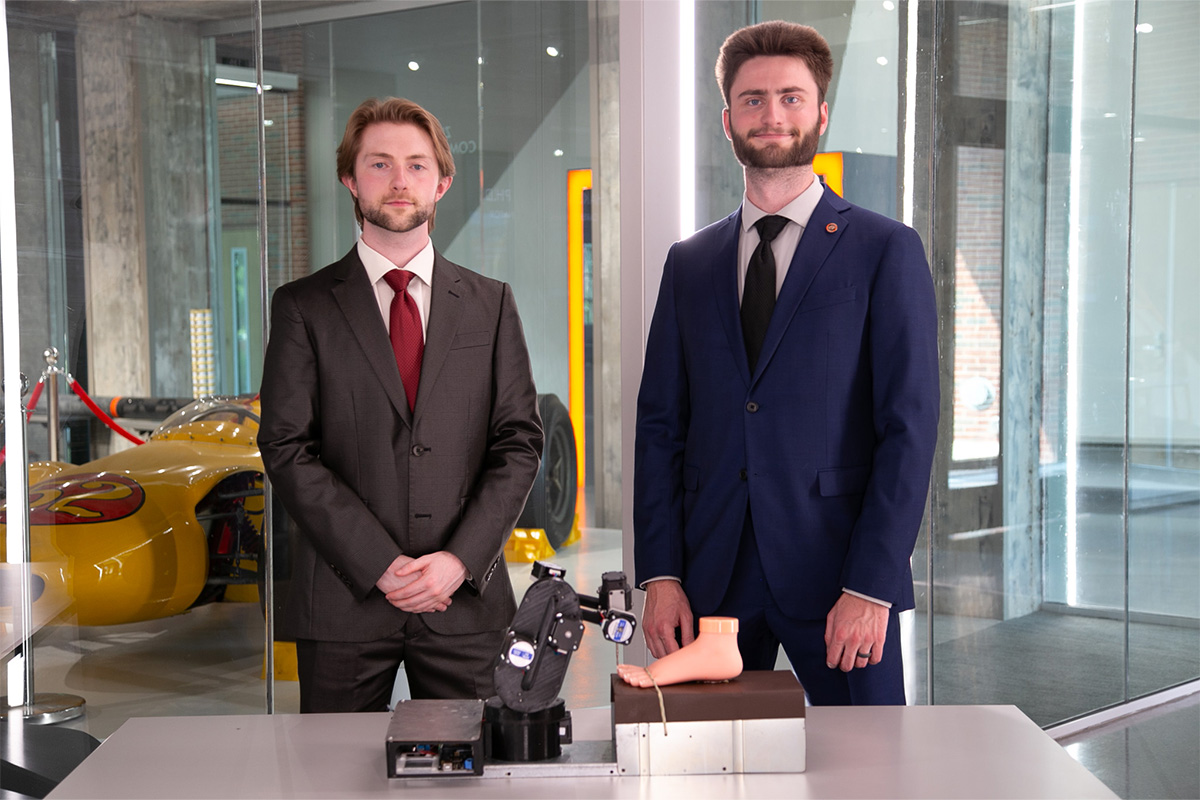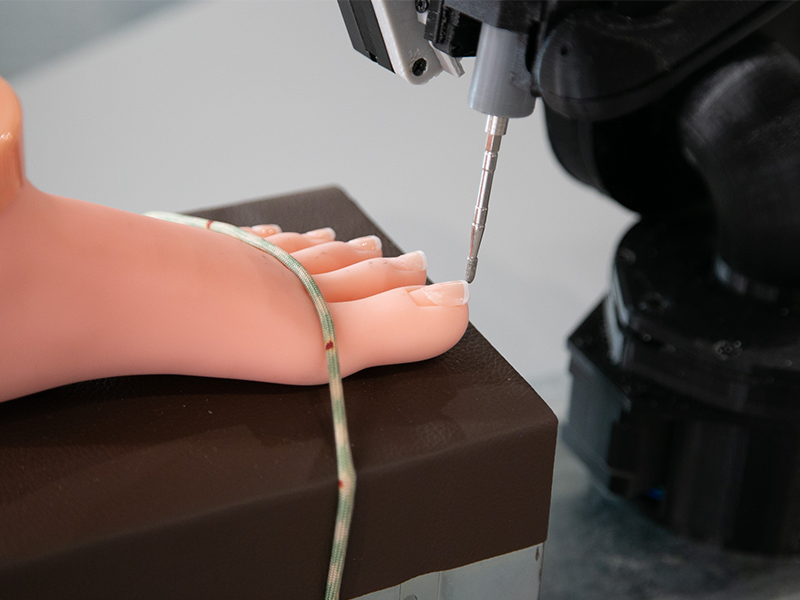OSU students transforming diabetic healthcare with robotics
Friday, September 5, 2025
Two Oklahoma State University graduates are tackling one of the most overlooked yet costly challenges in diabetic healthcare—routine foot care—by inventing a robotic nail care system designed to protect patients and empower podiatrists. Together, they are pioneering robotic solutions that promise to transform how doctors provide care for millions of diabetic patients worldwide.
For many diabetics, something as simple as trimming their own toenails can be catastrophic. Accidentally cutting skin can lead to infection and amputation. Nearly 80% of lower-limb amputations in the U.S. occur in diabetic patients, often beginning with small, preventable injuries. To reduce these risks, podiatrists perform routine nail care in medical settings, spending up to three hours a day on these procedures. While necessary, these tasks generate far less revenue compared to the complex surgeries podiatrists are trained to perform.
The venture, called Jotero, is the brainchild of Trevor Fogleman, an OSU MBA graduate, and Joel Quarnstrom, a Ph.D. candidate in mechanical and aerospace engineering.
Fogleman’s inspiration for the project was deeply personal. His diabetic grandfather struggled with regular foot hygiene, making him acutely aware of the need for safer, more efficient solutions. Quarnstrom, whose mother also has diabetes, immediately saw the potential for robotics to make an impact. The two first crossed paths competing in OSU entrepreneurship programs, and with support from the Riata Center for Innovation and Entrepreneurship and the Zink Center for Competitive Innovation, they joined forces to develop a robotic system unlike anything on the market.
Their invention performs nail care with medical-grade safety and sub-millimeter precision, completing the work in less than half the time of manual procedures. Podiatrists step in only for the finishing touches, ultimately saving up to 90 minutes per day that can be redirected toward higher-value treatments.
Since beginning development in 2025, Jotero has raised $35,000 in funding, including investments from podiatrists eager to see the technology succeed. The system is currently patent-pending and undergoing rapid prototyping. Industry experts estimate the technology could create $1 billion in value for podiatrists and patients as the diabetic population continues to rise.
“This project is more than innovation—it’s personal,” said Quarnstrom. “We’re using robotics not just to solve a technical challenge, but to improve the lives of people like our own family members who live with diabetes.”
Fogleman added, “By giving podiatrists a tool that saves time and reduces risk, we’re creating a win-win for both doctors and patients. Our vision is a future where robotics routinely assist in healthcare to make care safer, faster, and more accessible.”
Jotero represents the intersection of OSU’s strengths in engineering, entrepreneurship and healthcare innovation—and is positioning two of its alumni at the forefront of robotic medical technology.


